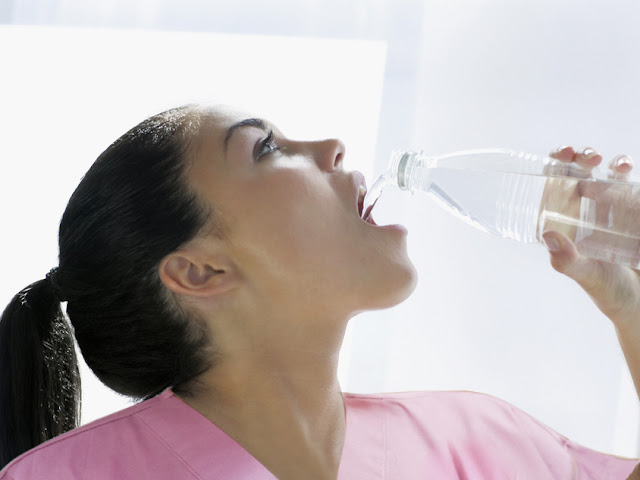Nurses play an integral role within the healthcare business, offering care to the patient and filling management roles at hospitals, health programs, and different organizations.However being a nurse will not be without its challenges. It is a demanding career that requires a whole lot of dedication and dedication.
Listed here are 5 large points dealing with nurses at present.
1. Compensation. Relating to nurse compensation, regional variations are to be anticipated primarily based on the price of residing.
Nurses dwelling insure areas of the U.S. make way more than nurses in different areas, based on the Affiliation of periOperative Registered Nurses group.
Nurses within the Pacific area make about $18,000 greater than the typical worker's nurse, for example. Subsequent is the Mid-Atlantic area; the place nurses make $14,800 greater than common. Nurses within the East South Central area, nevertheless, make $four,300 lower than common.
Past regional variations in pay, nurse pay gaps additionally persist between genders.
Male registered nurses earn, on common, upwards of $5,000 greater than their feminine counterparts. The gender pay hole is current in all specialties besides orthopedics, by a examine printed in JAMA. Amongst nurse specialties, power care had the smallest gender pay hole, at $three,792, and cardiology had the best hole, at $6,034.
2. Workplace violence. One other main problem nurses face is violent habits whereas on the job, be it from patient or coworkers.
Between 2012 and 2014, workplace violence harm charges elevated for all healthcare job classifications and almost doubled for nurse assistants and nurses, in response to information from the Occupational Health Security Community. A complete of 112 U.S. amenities in 19 states reported 10,680 Occupational Security and Health Administration recordable accidents occurring from January 1, 2012, to September 30, 2014. There have been four,674 affected person dealing with and motion accidents; three,972 slips, journeys and falls; and a pair of,034 workplace violence accidents.
This year, North Carolina took a stance in opposition to workplace violence. Beginning Dec. 1, individuals who assault hospital staff in North Carolina could be charged with a felony, because of a brand new state legislation. Information reported that the brand new regulation handed by "massive margins" and was signed into regulation final month.
Different states are additionally cracking down on workplace violence: In Massachusetts, the Massachusetts Nurses Affiliation union is pushing a workplace violence invoice that will add enhanced plans round workplace security.
3. Short staffing. Staffing is a matter of each skilled and private concern for nurses right this moment. The truth is, points associated with staffing ranges, unit group or inequitable assignments are one of many high causes nurses depart a hospital job, by Karlene Kerfoot, Ph.D., RN, VP of nursing for API Healthcare.
Again in June, the Health Coverage Fee unanimously accredited a mandate on nurse staffing in intensive care units all through Massachusetts. The laws require that nurses in intensive care units in hospitals, together with hospitals operated by the Massachusetts Division of Public Health, be assigned solely as much as two patient at a given time. The laws apply to all ICUs, together with particular units for burn patient, youngsters, and untimely infants.
If staffing is insufficient, nurses contend it threatens affected person health and security, leads to better complexity of care and impacts their health and security by growing fatigue and charge of damage.
Certainly, a Minnesota Division of Health evaluates of literature discovered robust proof linking decreased nurse staffing ranges to increased affected person mortality, failure to rescue and falls within the hospital. There was additionally robust proof that different care course of outcomes resembling drug administration errors, missed nursing care and affected person size of the keep are linked to decreasing nurse staffing ranges.
Moreover, a examine in Health Affairs discovered that insufficient staffing could hinder nurses' efforts to hold out processes of care. Researchers discovered that hospitals with greater nurse staffing had 25 % decrease odds of being penalized below the Reasonably priced Care Act's Hospital Readmissions Discount Program in comparison with in any other case related hospitals with decrease staffing.
That is why unionized nurses usually convey up staffing ranges when they're in the course of contract negotiations. For example, dozens of nurses protested Aug. three exterior of St. Petersburg (Fla.) Normal Hospital over staffing ranges and wages. Moreover, nurses and different healthcare employees deliberate to carry a picket July 15 exterior Renton, Wash.-based Valley Medical Heart over staffing ranges.
4. Lengthy working hours. Nurses are sometimes required to work lengthy shifts. However, in various instances, nurses should work back-to-back or prolonged shifts, risking fatigue that might end in medical errors.
2012 examine printed in Health Affairs discovered that the longer the shifts for hospital nurses, the upper the degrees of burnout and affected person dissatisfaction. Survey knowledge from the examine confirmed that greater than 80 % of the nurses in 4 states have been glad about scheduling practices at their hospital. Nonetheless, because the proportion of hospital nurses working shifts of greater than 13 hours elevated, patient' dissatisfaction with care elevated. Moreover, nurses working shifts of 10 hours or longer had been as much as 2.5 occasions extra probably than nurses working shorter shifts to expertise burnout, job dissatisfaction, and intent to depart the job.
And a 2014 examine within the American Journal of Essential Care discovered that nurses impaired by fatigue, lack of sleep, daytime sleepiness and a lack of ability to get well between shifts are extra doubtless than well-rested nurses to report choice remorse, an unfavorable cognitive emotion that happens when the precise result differs from the specified or anticipated consequence.
5. Workplace hazards. Nurses face a variety of workplace hazards every day whereas simply doing their jobs. These hazards embrace publicity to bloodborne pathogens, accidents, hand washing-related dermatitis and chilly and flu germs.
OSHA estimates 5.6 million out of roughly 12.2 million employees within the healthcare industry, and associated occupations are susceptible to occupational publicity to bloodborne pathogens.
And charges of workplace damage are larger in healthcare than different industries. Nurses expertise greater than 35,000 accidents involving the again, hands, shoulders and ft every year, by the Bureau of Labor Statistics. Many issues affect the probability of damage, together with age of the nurse and surroundings.
Apart from acute harm, nurses are additionally prone to suffer harm to their hands. Current research from the College of Manchester revealed healthcare employees following hand hygiene protocols are four.5 occasions extra prone to undergo reasonable to extreme pores and skin injury. In the identical examine, researchers discovered healthcare staff made up roughly 25 % of reported instances of irritant contact dermatitis.
Protecting nurses goes beyond their hands. As cold and flu season nears, hospitals and health techniques can put together to guard their workforce, together with additional measures for many who don't obtain the vaccinations for private or spiritual causes. One choice is having the nurses put on an antiviral face mask, which has been present to kill or inactivate 99.99 p.c of laboratory-tested flu viruses.

















